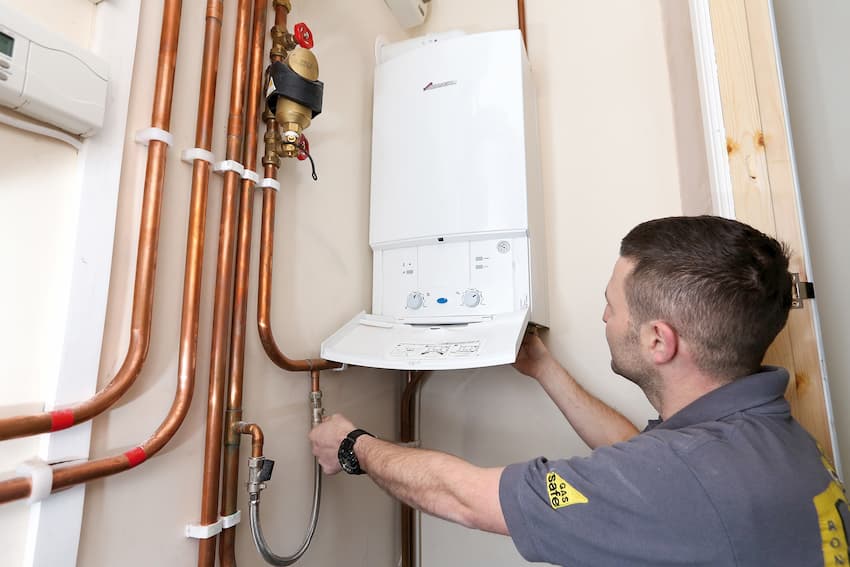Professional Gas Installer Techniques for Seamless and Reliable System Integration
Discovering the ins and outs of specialist gas installment, one need to appreciate the accuracy and know-how required for seamless system assimilation. At the core of this procedure lies careful planning and site assessment, fundamental in tailoring installments to particular settings. Using innovative modern technologies such as digital manometers and thermal imaging cameras enhances both precision and effectiveness. These tools, integrated with strict adherence to security standards, ensure detailed system screening and optimum efficiency. What genuinely distinguishes experts in this area is their commitment to recurring education and learning and thorough paperwork, a practice that unveils the following essential steps in ensuring dependability - gas installer.
Precision Planning
In the world of gas installment, accuracy preparation is extremely important to guaranteeing both safety and effectiveness. The intricacy of gas systems needs thorough attention to detail from the beginning. A detailed strategy starts with a thorough website analysis, recognizing prospective risks and comprehending the details needs of each environment. This preliminary assessment establishes the phase for the advancement of a critical strategy that straightens with market standards and regulatory conformity.

Collaborating with various other specialists, such as engineers and designers, is crucial to integrating the gas setup flawlessly within the broader construction structure. This partnership makes certain that all elements of the installation are synchronized, reducing risks and enhancing overall efficiency. Precision planning in gas setup is not merely a procedural step; it is the structure upon which secure, reputable, and reliable gas systems are developed.
Advanced Tools and Innovation
Structure upon the structure of accuracy preparation, the combination of sophisticated devices and modern technology boosts the criteria of gas installation better. Contemporary gas installers utilize innovative tools that improves precision and efficiency, making sure smooth and reliable system assimilation. Instruments such as digital manometers give exact stress analyses, important for adjusting gas systems to optimal performance levels. Furthermore, thermal imaging electronic cameras are utilized to detect leakages and make certain system honesty, helping with aggressive maintenance and minimizing the possibility of functional disruptions.
The introduction of smart innovation has actually even more reinvented gas installations. gas installer. Smart meters and IoT-enabled devices enable real-time tracking and remote diagnostics, granting installers the capability to expect problems prior to they manifest into larger issues. This positive method not only optimizes system efficiency but likewise expands the lifespan of the setups
Additionally, advanced software services assist in thorough preparation and execution. CAD software help in creating complex gas systems, making sure spatial efficiency and conformity with layout specifications. These digital devices, when coupled with competent craftsmanship, contribute considerably to the accuracy and integrity of gas installations, symbolizing the future of the market where technology and proficiency converge.
Safety Requirements Compliance
Complying with rigorous safety standards is extremely important in the field of this hyperlink gas installment, where also small oversights can have significant repercussions. Compliance with recognized safety procedures guarantees the protection of both installers and end-users, mitigating dangers such as gas leaks, explosions, or carbon monoxide gas poisoning. Professional gas installers should continue to be alert, consistently updating their knowledge of industry laws, consisting of neighborhood, nationwide, and worldwide codes.
The core of security criteria conformity depends on meticulous planning and execution. Installers are responsible for performing thorough danger assessments prior to beginning any kind of project, recognizing prospective threats and implementing control actions. This entails recognizing the residential properties of various gases, the proper use materials, and ensuring all parts satisfy qualified safety criteria.
Furthermore, ongoing education and certification are vital for preserving high standards. Installers should take part in training programs and workshops, concentrating on current safety and security advancements and regulative adjustments. Such commitment to expert growth not just enhances their skillset yet also reinforces the industry's track record for reliability and security.

Reliable System Testing
Effective system testing is crucial in guaranteeing the ideal efficiency and safety and security of gas installations. Utilizing sophisticated devices and methods, experts can accurately measure the system's capability to endure operational demands.

Capability evaluation includes the analysis of all system parts to ascertain their look at these guys proper installment and procedure. This consists of examining valves, regulatory authorities, and links for appropriate integration and performance. Recording each test is crucial, giving a thorough record that verifies compliance with market standards and policies. Efficient system screening not only assures safety and security but likewise improves customer self-confidence in the honesty of the setup.
Troubleshooting and Upkeep
Troubleshooting and maintenance stand for the backbone of sustaining gas installments' functionality and safety over time. A methodical method to repairing includes understanding system schematics and utilizing analysis devices to separate problems accurately.
Precautionary upkeep is just as vital, focusing on routine checks and maintenance to extend the life-span of the gas system. Vital jobs include cleaning up heaters, checking out vents for blockages, and assessing seals go to this web-site for wear. These techniques aid avert costly fixings and enhance the system's dependability. Maintaining comprehensive records of upkeep tasks is also critical, as it enables tracking historical information, which can be important for future troubleshooting sessions.
Additionally, staying updated with developments in technology and market regulations makes sure that upkeep practices are lined up with modern standards. This proactive stance not only guarantees conformity but likewise maximizes the performance of gas setups. Consequently, a robust troubleshooting and maintenance routine is important for experts dedicated to delivering smooth and reputable system integration.
Conclusion
The combination of gas systems demands accuracy preparation, advanced tools, and stringent adherence to safety standards. These thorough techniques jointly help with smooth system integration, underscoring the value of competence and accuracy in maintaining high standards of safety and dependability.